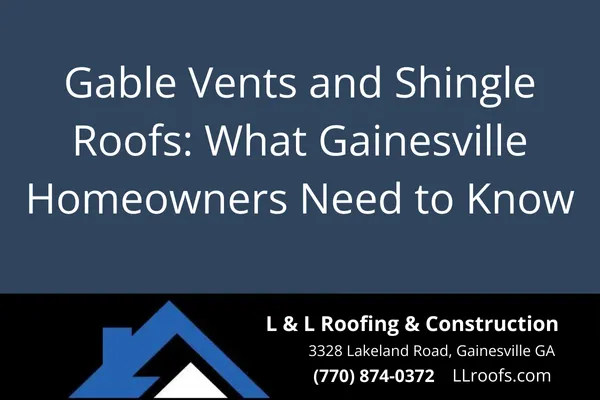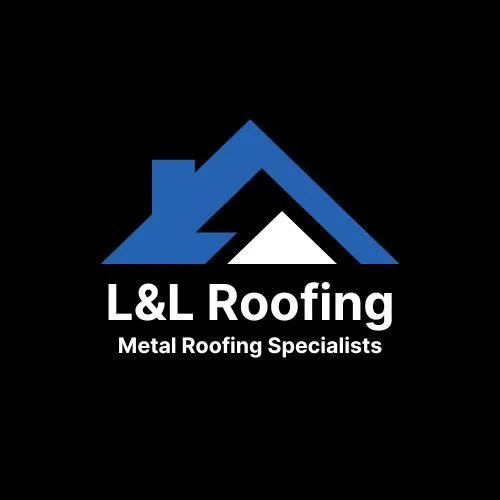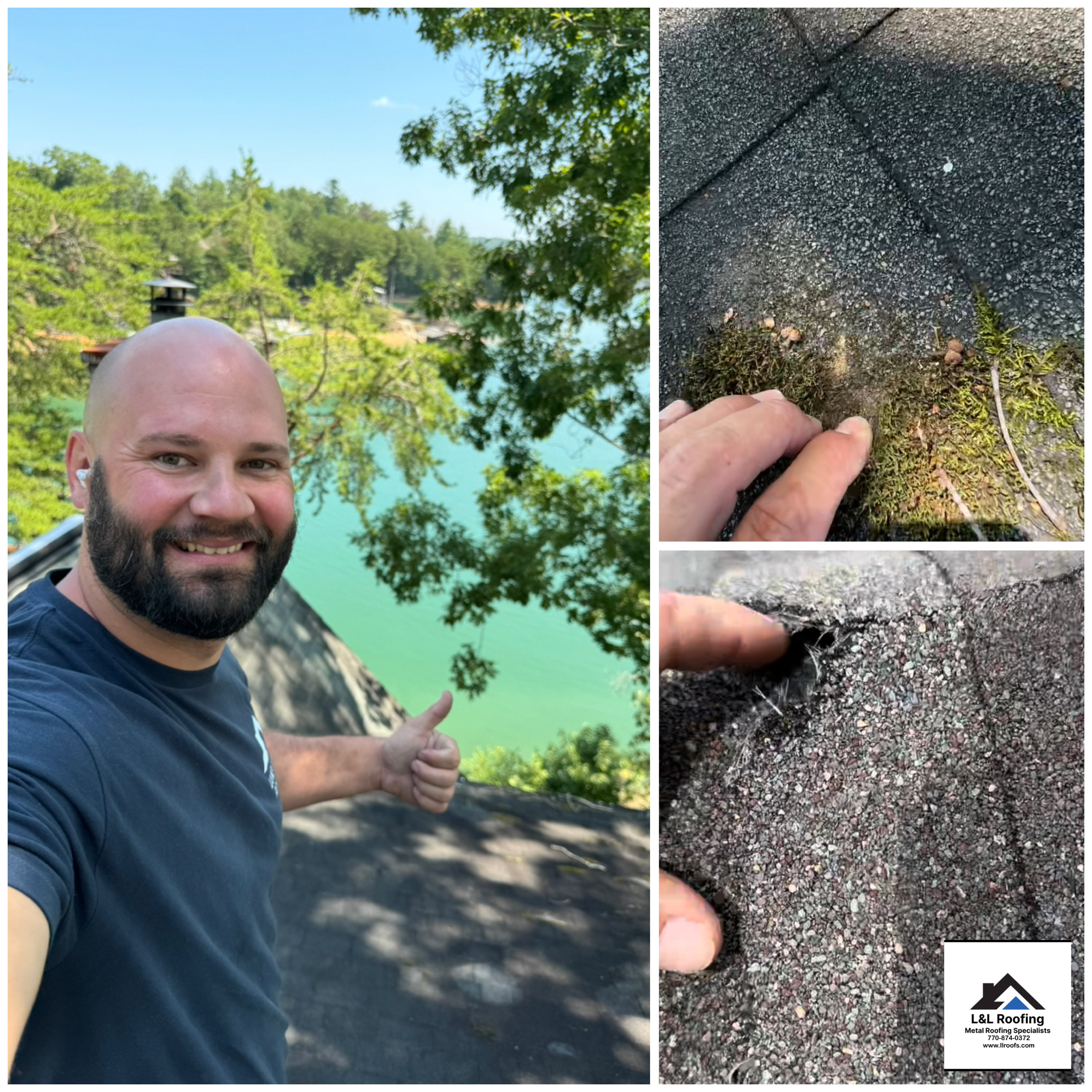
Gable Vents and Shingle Roofs: What Gainesville Homeowners Need to Know
How Gable Vents Work with Shingle Roofs (And Why It Matters for Your Home)
Shingle roofing is a top choice for homeowners in Gainesville and surrounding communities like Dawsonville, Buford, and Flowery Branch. But something often overlooked during roof installs and replacements? Proper attic ventilation—especially when it comes to gable vents.
If you're considering a new roof or already have a shingle roof and gable vents, here’s what you need to know.
What Are Gable Vents?
Gable vents are louvered openings placed at the peak of your home's gable ends. They allow hot, humid, or stale air to escape from your attic. They’re passive (no fans required) and work based on air pressure and temperature differentials.
They're most effective when paired with intake vents at the eaves or soffits, allowing cooler outside air to push the hot air up and out.
Do Gable Vents Work with Shingle Roofs?
Yes—but only if designed into a balanced attic ventilation system. That means:
Intake vents low at the roof edge (like soffit vents).
Exhaust vents high on the roof (gable, ridge, or box vents—not all at once).
When done right, this helps:
Lower attic temperatures
Prevent moisture buildup
Reduce the risk of shingle damage and premature aging
Improve energy efficiency
According to the Roof Assembly Ventilation Coalition (RAVC), unbalanced or mixed vent types can short-circuit airflow, causing moisture and heat to get trapped.
What to Watch For: Common Gable Vent Mistakes
At L&L Roofing & Construction, we've seen several homes in Gainesville with these avoidable issues:
Blocked soffit vents (insulation pushed too far)
Using gable and ridge vents together — which can pull in air from each other instead of exhausting attic heat
Improper gable vent sizing (too small = ineffective)
No baffles installed at soffit areas, disrupting airflow path
All of these can cause:
Mold and rot in the attic
Ice damming in winter
Warped or curled shingles
Higher utility bills
Our Recommendation: One System, Done Right
Every attic needs ventilation—but not every home needs gable vents.
When we inspect a roof, we evaluate your:
Roof slope and layout
Current insulation and airflow
Vent locations and type
Shingle age and condition
From there, we design a ventilation system that matches your roofing setup—so your shingles last longer and your attic stays dry and cool.
We’ll either:
Keep and optimize your gable vents as part of a balanced system
Or seal them off and switch to ridge and soffit venting if that fits your roof better
Homeowner FAQs
Can gable vents cause leaks?
Not if they’re installed correctly. But if flashing is missing or the vents face prevailing winds, water intrusion can happen. We ensure vents are sealed and flashed properly.
Should I remove my gable vents if I have ridge vents?
Usually, yes. Mixing ridge and gable vents can disrupt airflow. It’s best to choose one exhaust method—typically ridge vents for most asphalt shingle roofs in our climate.
How do I know if my attic is ventilated properly?
If your attic feels like a sauna, your shingles are curling, or your HVAC bills are high, your attic may be under-ventilated. We offer free inspections to assess this.
Trust L&L Roofing to Get Your Roof (and Ventilation) Right
Whether you live in Cumming, Dahlonega, or right here in Gainesville, our team does more than just replace roofs—we make sure your entire roofing system works together, including your ventilation.
And we’ll do it with honesty, integrity, and old-fashioned hard work. That’s the L&L way.
📞 Call us today at (770) 874-0372 for a free roof and attic ventilation inspection.

